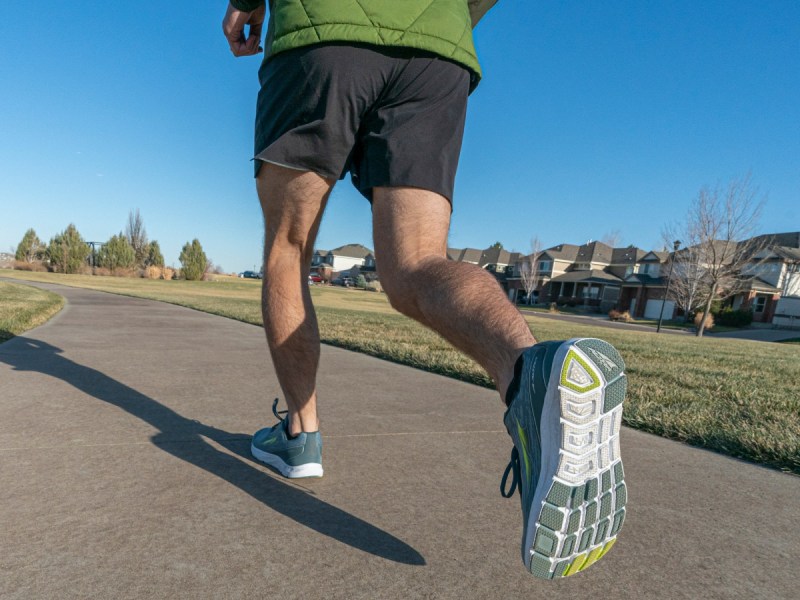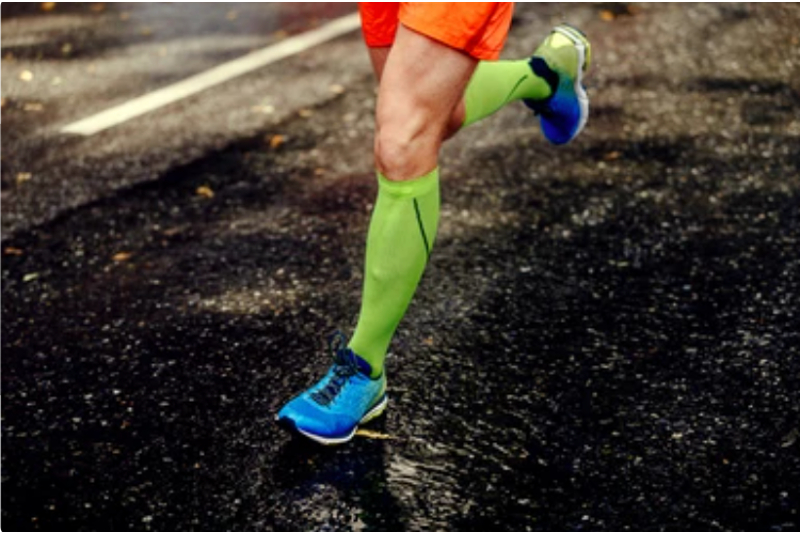
When the average person walks, their knees absorb a little more than one pound of stress for each pound of body weight. When that same person runs, that amount reaches almost four pounds of stress. While that’s a lot of shock to absorb, your knees are built for this work. You just have to take care of them.
Sometimes running gets a bad rap. People think that running and the stress it brings break down cartilage in the knee. They also worry that any pre-existing joint condition will get worse the more they run. Is that true?
Running by itself isn’t bad for your knees, especially if you take precautions and good care of yourself, but let’s hear from some experts about the science behind running and how it affects your knees.

What are the benefits of running?
Improves sleep
Almost every wellness plan includes getting a good night’s sleep. In fact, if you’re not sleeping well, staying active and fit is more challenging. Sleeping is when your body recharges its batteries and heals itself. Your body needs this valuable downtime to recover from physical and mental activity.
The good news is that runners sleep better. In general, athletes say they fall asleep more quickly and enjoy a deeper rest than those who aren’t as active. This is self-perpetuating in that the more you run, the more you need good sleep. If you’re not sleeping, you won’t be able to run as effectively.
Running in the morning, afternoon, or early evening is an excellent way to improve your sleeping habits. Avoid working out within an hour of bedtime to reap the snoozing benefits of a good run.
Improves your knees and back
Your knees are made to help you walk and run. Although running is an impact sport, it can strengthen your knees and back when done properly. Runners don’t have nearly the amount of knee and back problems as sedentary adults.
According to Dr. LS Wang, an internationally published, award-winning, double-fellowship-trained orthopedic surgeon with more than 18 years of clinical experience, “Running is an excellent form of cardiovascular exercise. With the proper technique and training, running has a low risk of injury and can actually help maintain joint health by promoting circulation and strengthening the muscles that support the joints.”
Reduces risk of mental illness
Many people run because it improves their physical fitness. They soon discover that running also improves how they feel mentally. Running is often credited with improving moods, emotions, and mental energy.
Studies show that running, like any aerobic exercise, may help alleviate depression as effectively as therapy or medication. It’s also a less costly alternative to more traditional medical treatments for mental health issues.
Obviously, you don’t want to rely solely on running or any fitness routine to counteract depression. It’s a serious condition and deserves your doctor’s full attention to combat. Running is just one of many approaches to be explored as part of your wellness plan.
Aids in weight loss
Running gets your whole body moving and therefore burns more calories than other activities. No matter your speed, aerobic exercises like running result in weight loss. As a general rule, you can burn about 100 calories per mile.
As we age, keeping the weight off is challenging. The lure of fad diets enables many people to lose large amounts of weight in six months or less. For many, that amount of weight and more comes back within the next 6 to 18 months.
To beat those odds, commit to a consistent, long-term exercise routine like running. If you run between two and three hours per week, you’ll enjoy better weight maintenance than individuals doing less.

Is running bad for your knees?
When you run, you do strike the ground with force, so it’s natural to worry about your knees and the risks of arthritis later in life. What do some experts have to say?
Shounuck Patel, a sports and regenerative medicine physician at The Patel Center for Functional Regeneration, says many people blame running for such issues, but he says it’s not that simple.
“Research has been mixed over the years regarding the effects of running on knee osteoarthritis, with previous meta-analyses showing no robust correlation. The reality is that degenerative joint disease is not as simple as ‘wear and tear.’ There are a lot of factors that go into the development of osteoarthritis, and its presence doesn’t always equal pain.”
He continues, “The good news is that runners can keep running without the fear that they’re going to ruin their knees. That said, it’s important to make sure we cross-train and strengthen our bodies so that we’re moving appropriately and control for as many factors as we can in the battle against arthritis.”
Dr. Mauricio Garcia concurs. The senior project manager for Hyper Arch Motion says, “It’s a common belief that long-distance running can damage the knees and other joints long-term. However, this might not be the case. Some care should be taken when analyzing the methodology used. Even retrospectively, survey studies are not suitable for reaching definitive conclusions.”

What can cause knee pain while running?
While running itself isn’t inherently bad for your knees, extenuating factors can lead to trouble. Think about these variables that may make running hard on your knees. Such factors include:
- Improper form. While sometimes complex and nuanced, running with good form is about maintaining good posture and looking straight ahead. Your arms should be at about a 90-degree angle while you’re taking quick strides. Replace heel strikes with mid-foot strikes instead. This will reduce the likelihood of knee pain.
- Bad shoes. When choosing the right running shoes, find a store to visit in person that offers a gait analysis. This is especially helpful if you run long distances. Experienced employees can match you up with the right cushion level, arch support, and width that you need.
- Hard surfaces. Consider where you’re running. If asphalt or cement surfaces lead to discomfort, run on softer surfaces like a woodchip trail, grass, or treadmill instead. It may reduce the impact on your tibiae, knees, and other joints.

How to minimize the impact on knees while running
Take it easy
When you’re first starting out, don’t run too hard or too fast. Start slow. Your body needs time to adjust to new activities and stressors. Many experienced runners go by the 10% rule that says not to increase your weekly miles by more than 10% each week.
Warm up, cool down
This is vital. If you warm up before a run, you’re less likely to run with bad form. This will reduce your risk of injury. Cooling down allows your body to gradually recover and reduce muscle soreness. Check with a coach or rehabilitation expert for dynamic and static stretches that work for you.
Run with proper form
An experienced running coach is so helpful in this area. We often think that running is simple and natural, but many injuries result from running in the wrong manner. Coaches help analyze runners, especially in the beginning, and then help them improve form and gait. They also show runners how to cross-train and stretch for maximum benefits.

Does regular running cause any long-term issues?
“Running can be a safe and healthy exercise for those who take the proper precautions,” says Dr. Laura Purdy, MD, MBA. “It is important for runners to engage in proper conditioning, maintain good form, and listen to their bodies to prevent injuries and other issues. As always, it is important to consult a medical professional if you have any concerns about your exercise routine or any other health issues.”
Editors' Recommendations
- Gym etiquette: The unwritten rules everyone should follow
- The most effective pre-workout routine is so easy it’s ridiculous
- 12 tips for healthy habits from TB12 body coach Bryan Hart
- Aum Gandhi reveals the secret health benefits of trail running
- How to prevent shin splints: 5 simple tips for a better workout




